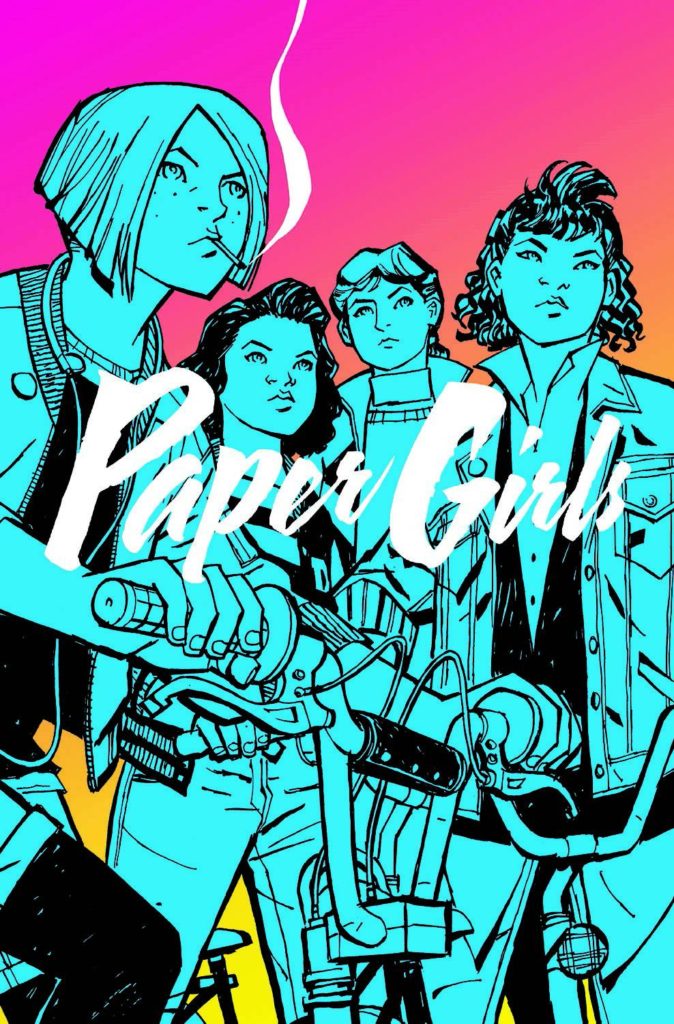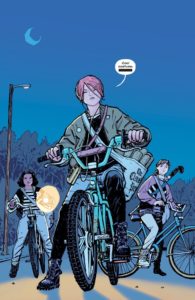E and I had our first DVD player when we lived in Pine Street, just after I graduated college. I suppose it was in a laptop of hers, because we didn’t have a television and I remember watching movies in bed.
I was excited to reclaim some of the films of my youth long since lost on the beta tapes they were captured on, so between that year and the next I filled them all in. Dark Crystal, The Lost Boys, Labyrinth, and more.
The thing about these nostalgia viewings is that you can re-watch the thing you once loved, but it might not produce the same magic. I was so excited to show E The Lost Boys, labelling it as a sort of proto-Buffy as we settled into bed to watch it, but it was laugh-out-loud lame. Yet, there are still new layers to unravel in Labyrinth.
The 80s produced so much of those wonderful coming of age stories, and I don’t think I’m saying that because I was young at the time. Actually, I was ignorant of most of the stuff like Stand By Me and The Goonies, because at the ripe old age of seven I already felt I was too old for their messages. The Lost Boys, at least, had vampires. Yet, looking back there are so many seminal movies in that Amblin Entertainment model set by E.T. and Goonies that are still referenced today, right down to their feel being aped by films like Super 8.
 I’ve never seen Stand By Me or The Goonies. I know, I know – it’s sacrilege. Just now I looked them up on Wikipedia to make sure I wasn’t mistaking them for something else.
I’ve never seen Stand By Me or The Goonies. I know, I know – it’s sacrilege. Just now I looked them up on Wikipedia to make sure I wasn’t mistaking them for something else.
It’s odd for me to watch this new generation of media being produced by the folks who came of age with the first set – usually a few years older than me, probably old enough to have seen these films in theatres on their own.
The 80s vibe is unmistakeable, but I don’t know all their influences by heart the way I do things that reference David Bowie or Buffy The Vampire Slayer.
![]()
Paper Girls, Vol. 2 

Collects issues #1-5 written by Brian K. Vaughan with line art by Cliff Chiang, color art by Matt Wilson, and letters by Jared K. Fletcher.
Tweet-sized Review: Vaughan and Chiang’s Paper Girls tries for all-girls Goonies but maybe foregrounds too many monsters too soon
CK Says: Skip it (for now)
Paper Girls is the newest Brian K. Vaughan jam to hit its first collection, but I think you’d be better off waiting for a second trade paperback before you start reading.
Vaughan is the master creator of critical hits like Y: The Last Man, Ex Machina, Marvel’s Runaways, The Private Eye, and the still-running deeply personal space fantasy Saga, which is currently the biggest independent comic after The Walking Dead. Vaughan is joined on this creator-owned Image Comics series by artist Cliff Chiang, directly from his run on DC’s Wonder Woman, and uber-colorist Matt Wilson, from everything.
Paper Girls promised a return to normalcy after the devious Saga, focusing on a group of girls on their 1988 paper route. Of course, Vaughan would never go full-normal on us – these girls would surely tangle with something fantastical.
The story begins with Erin waking from a macabre dream where she’s greeted in heaven by the astronaut angel of Christa McAullife but quickly plunged into a fiery hell where her younger sister is held captive. She wakes with a start ahead of her 4:45 a.m. alarm. Tt’s the “Hell morning” after Halloween, and she has to deliver her development’s newspapers.
There is an unsavory element still roaming the suburban streets in costume at that hour, and Erin steels herself for conflict. Luckily, a group of other girls who deliver papers – including the girl who first shattered the newsprint ceiling – ride up to support her; they’ve learned to band together on mornings like this one.
 Everything about this sequence is pure wonder. Vaughan and Chiang captured pure Amblin Entertainment magic on the page both in imagery and in the cutting patter between the trio of friends and the younger Erin. The vibe is abetted by Wilson’s strains of gray, blue, and pink pre-dawn light. Jared K. Fletcher’s plain uppers and lowers lettering added to the realistic, casual vibe.
Everything about this sequence is pure wonder. Vaughan and Chiang captured pure Amblin Entertainment magic on the page both in imagery and in the cutting patter between the trio of friends and the younger Erin. The vibe is abetted by Wilson’s strains of gray, blue, and pink pre-dawn light. Jared K. Fletcher’s plain uppers and lowers lettering added to the realistic, casual vibe.
I was acutely aware as I read how unusual it was to be reading a coming-of-age adventure about young women without any boys in their orbit or secret princess lives to discover. I wanted to turn it into a movie and send it back to my seven-year-old-self to watch.
It is here that Paper Girls and I began to diverge, because the plot escalates immediately from their meeting.
I wanted more of the girls, their personalities, their relationships to one another, their uneasy once-a-year camaraderie as strains of the unusual filtered in around them along with the morning light. It was something beautiful and worth reading about. Instead, it happens all at once – creepy strangers, mysterious devices, disappearing parents, and futuristic knights riding weird pterodactyls.
It was too much, too soon for me. Vaughan usually plays such a long game in his series that you fall in love with his characters, yet need a dozen issues to feel the plot fully blossom. He broke this streak in Saga, which was addictive from the first issues. The future narration from the main character gave us all of the built-in tension we needed long before we learned about the details of the racial divide between her Romeo & Juliet parent and the politics of the war that brought them together.
In Paper Girls, Vaughan has pushed so much madness into the opening installments that we’ve lost the thing that usually makes his book great – the characters. There’s no Mitchell Hundred or Yorick Brown here, each succeeding despite their own flaws, and no team of Runaways bouncing off of one another’s teenage angst. Despite some distinct differences in their personalities, the four paper girls are same-ish save for the tired bravado of their leader. Most of their dialog was interchangeable. A brief encounter with one of their parents plays like an after-school special and the tension that arises from the injection of a pair of additional outsiders lasts only a few pages.
It doesn’t help that Chiang’s art, though generally gorgeous, gives many characters similar boxy faces. I tried to differentiate Erin from one of the other girls for a while by the difference in their bangs until I eventually gave up.
A little piece of me wonders if I’m holding Paper Girls to an invisible standard that I wouldn’t apply to a book about boys. Would I demand more introductory issues about characters and their relationships if we were following a group of familiar archetypal boys? Or, would I say, “Wow, they jumped right in to a slam-bang adventure!”
I don’t know. This book felt magical when it was about a strange dream of heaven versus hell and girls banding together to chase off teenage bullies. The quick introduction of guns and aliens dissipated the magic. It ends on a cliffhanger that breaks up the group along the same perforated line that had divided them all along. That comes with a hairpin twist that made me put the book directly into “sell this one” pile.
Maybe Paper Girls really is classic Vaughan and 10 or 20 assembled issues the atypical fast pace will even itself out. Until we’re sure about that, I’d say this is his rockiest start to date.